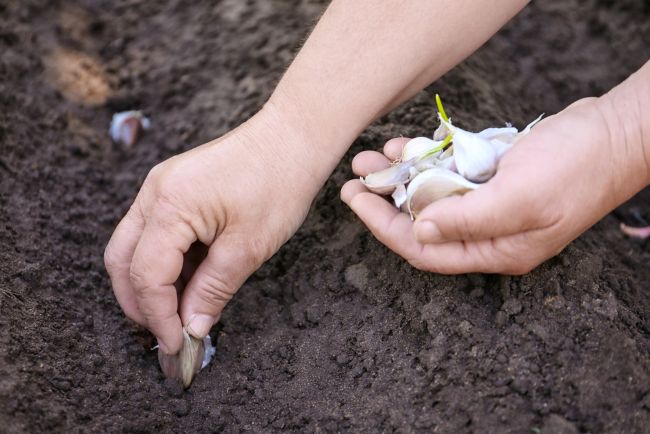How to Grow Garlic: A Complete Guide

Planting garlic cloves
Garlic (Allium sativum) is a hardy, flavour‑packed crop that rewards gardeners with a year’s supply of bulbs for remarkably little effort. Whether you grow it for the kitchen, the health benefits or simply the joy of harvesting plump, papery heads, garlic is one of the most satisfying crops for UK gardens. This guide covers everything you need to know from choosing varieties right through to curing and storage.
Choosing Varieties
Garlic is broadly divided into two groups: hardneck and softneck. Hardneck types (e.g. ‘Carcassonne Wight’) produce scapes and offer complex flavours but store for 3–4 months. Softneck types (e.g. ‘Solent Wight’) are better for plaiting and can store for up to 10 months. In most UK gardens softneck varieties are the go‑to for long storage, while hardnecks suit cooler northern plots or growers who enjoy the edible flower stalks. Always buy certified, disease‑free seed bulbs rather than supermarket cloves to avoid introducing viruses.
When to Plant
In the UK, the main planting window is autumn (October–November) so cloves experience 6–8 weeks of cold that triggers bulb formation. Some softneck cultivars can also be planted in early spring (February–March) but yields are usually smaller. Avoid planting too late; cloves need time to root before heavy frosts.
Soil Preparation
Garlic thrives in free‑draining, fertile soil with a neutral to slightly alkaline pH (6.5–7.5). Work in plenty of well‑rotted compost or garden manure a month before planting, then rake in a general organic fertiliser such as blood, fish & bone at 70 g m‑2 just before the cloves go in. Avoid freshly manured beds or water‑logged sites, which encourage rot.
Planting Steps
Break bulbs into individual cloves just before planting. Discard any damaged or undersized pieces. Push each clove into the soil with the pointed tip up, 5 cm deep and 15 cm apart in rows 30 cm apart. For container growing, use a 30 cm deep pot filled with peat‑free compost blended 50:50 with horticultural grit.
Caring for Garlic
Keep the crop weed‑free; garlic hates competition. Water during prolonged dry spells, especially in spring as bulbs swell, but avoid over‑watering in winter. In March top‑dress with sulphate of potash or apply a high‑potash liquid feed every fortnight. Remove any flower stalks (scapes) on hardneck types as soon as they appear to channel energy into the bulb (they’re delicious stir‑fried). Mulching with straw helps suppress weeds and conserves moisture.
Pests & Diseases
Garlic is relatively trouble‑free, but watch for leek rust (orange pustules on leaves) – improve air circulation and avoid overhead watering to limit spread. Allium leaf miner and onion fly maggots can also tunnel into stems; protect crops with insect‑proof mesh from March to May and again in September. Rotate beds on a four‑year cycle and burn any infected debris.
Harvesting & Curing
Begin checking plants in mid‑June for autumn‑planted crops or late July for spring‑planted ones. When the lower third of leaves have turned yellow, gently lift bulbs with a fork; don’t wait until all foliage dies back or cloves may split. Brush off soil and lay bulbs on racks or tie in bunches to dry in an airy, shaded spot for 2–3 weeks until skins are papery and roots brittle.
Storing & Using
Trim the roots and cut stems to 3 cm, or plait softneck varieties for hanging. Store bulbs in a cool, dry, well‑ventilated place at 0–5 °C for longest keeping. Check monthly and discard any that soften or sprout. Use smaller cloves first and save the best bulbs for re‑planting next season.
Conclusion
With a little forward planning and attention to soil health, garlic practically grows itself. Plant at the right time, keep weeds at bay and harvest when the leaves signal readiness – you’ll be rewarded with pungent, home‑grown bulbs that elevate every meal and store through the winter.





















